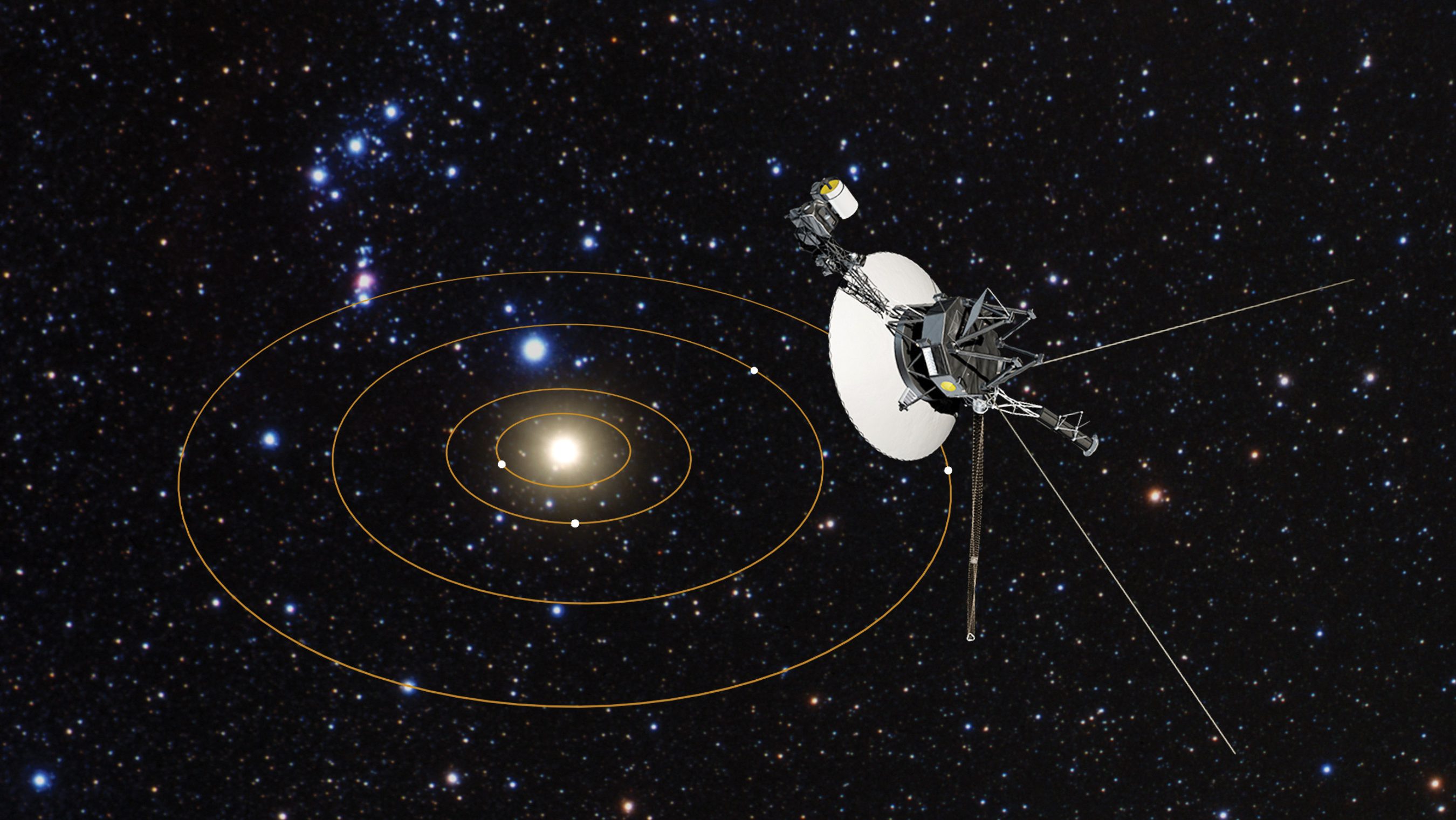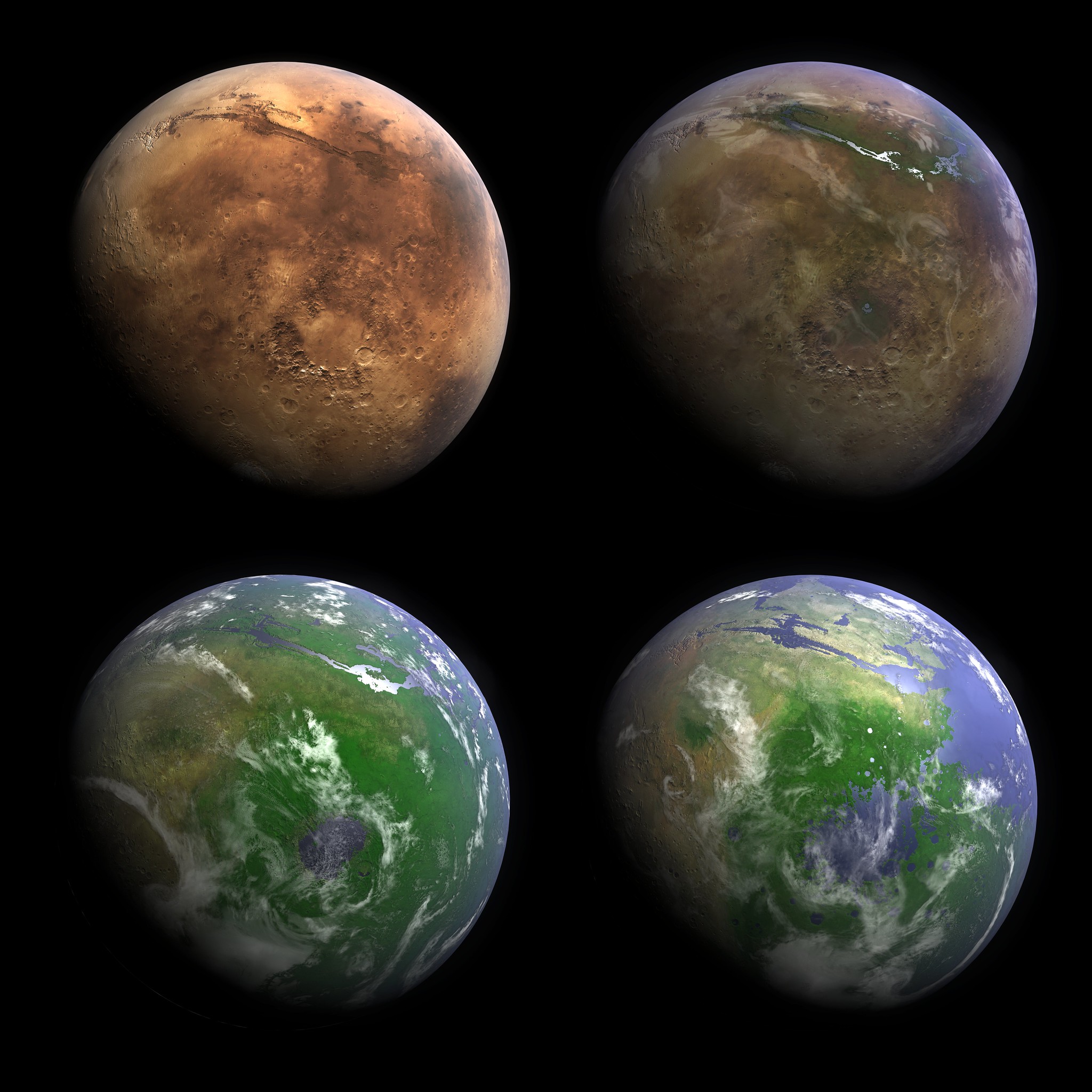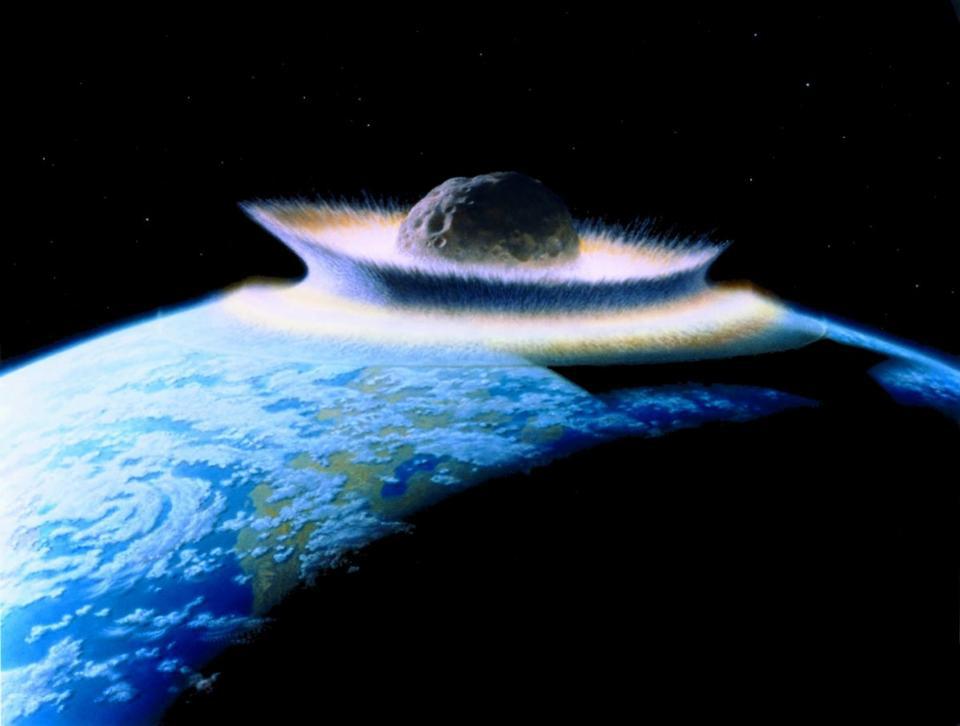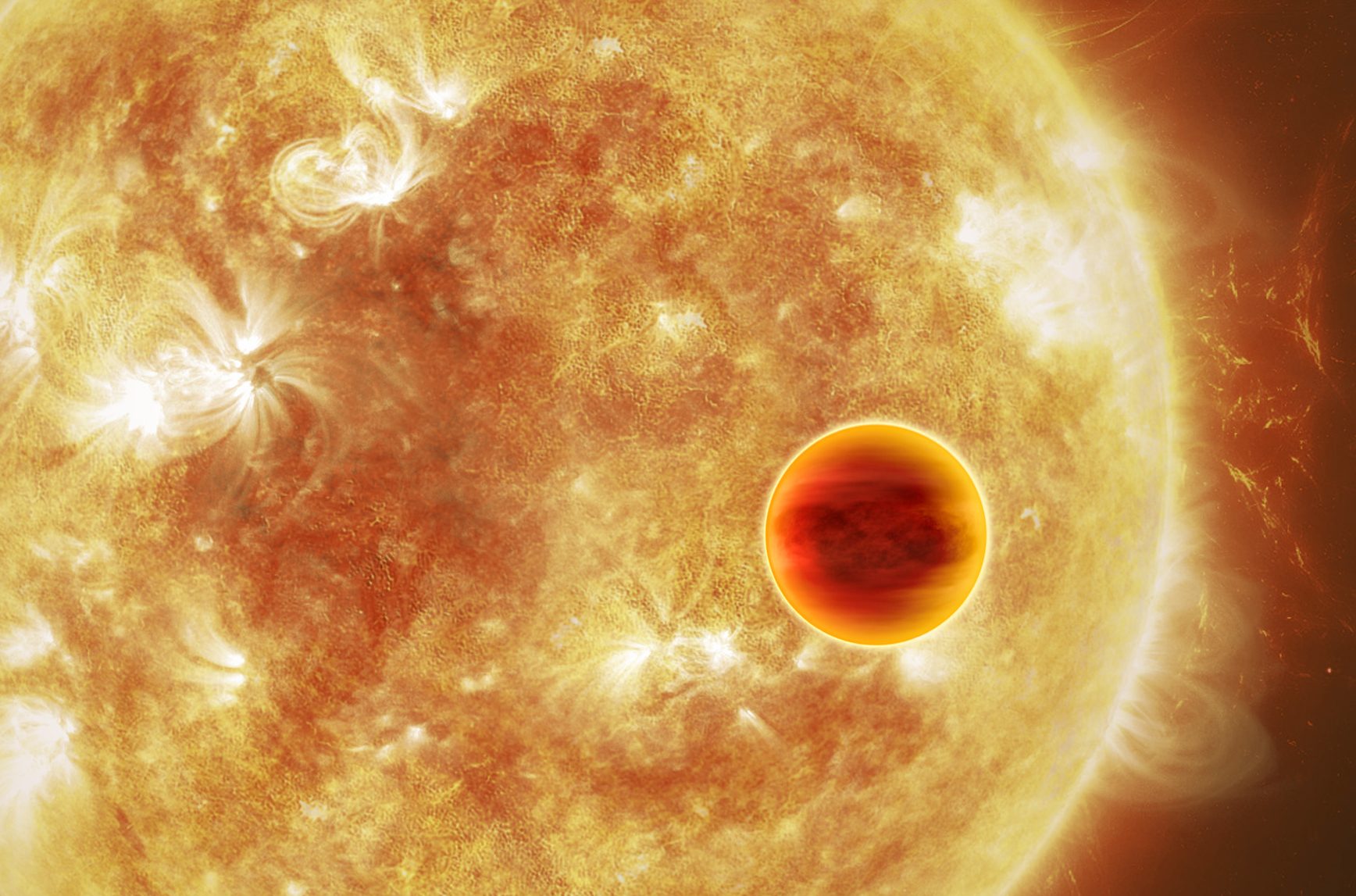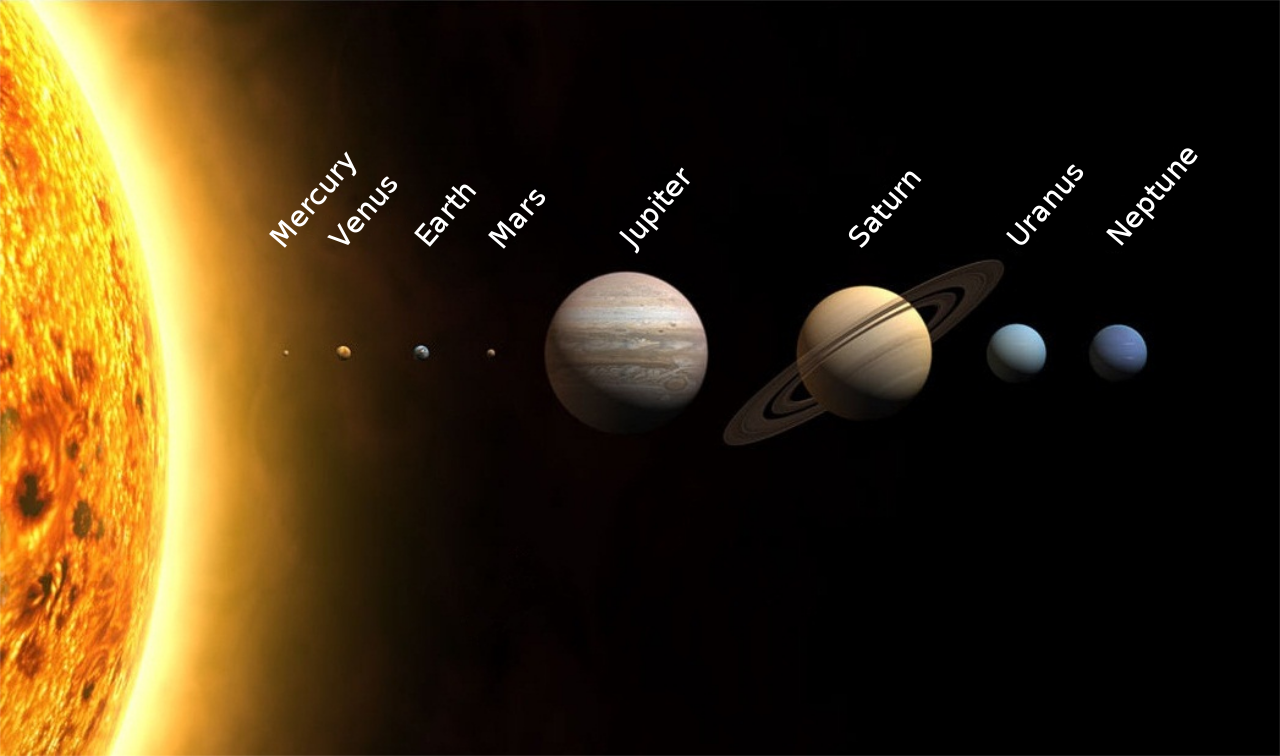Why Uranus needs, and deserves, a closer look than ever before
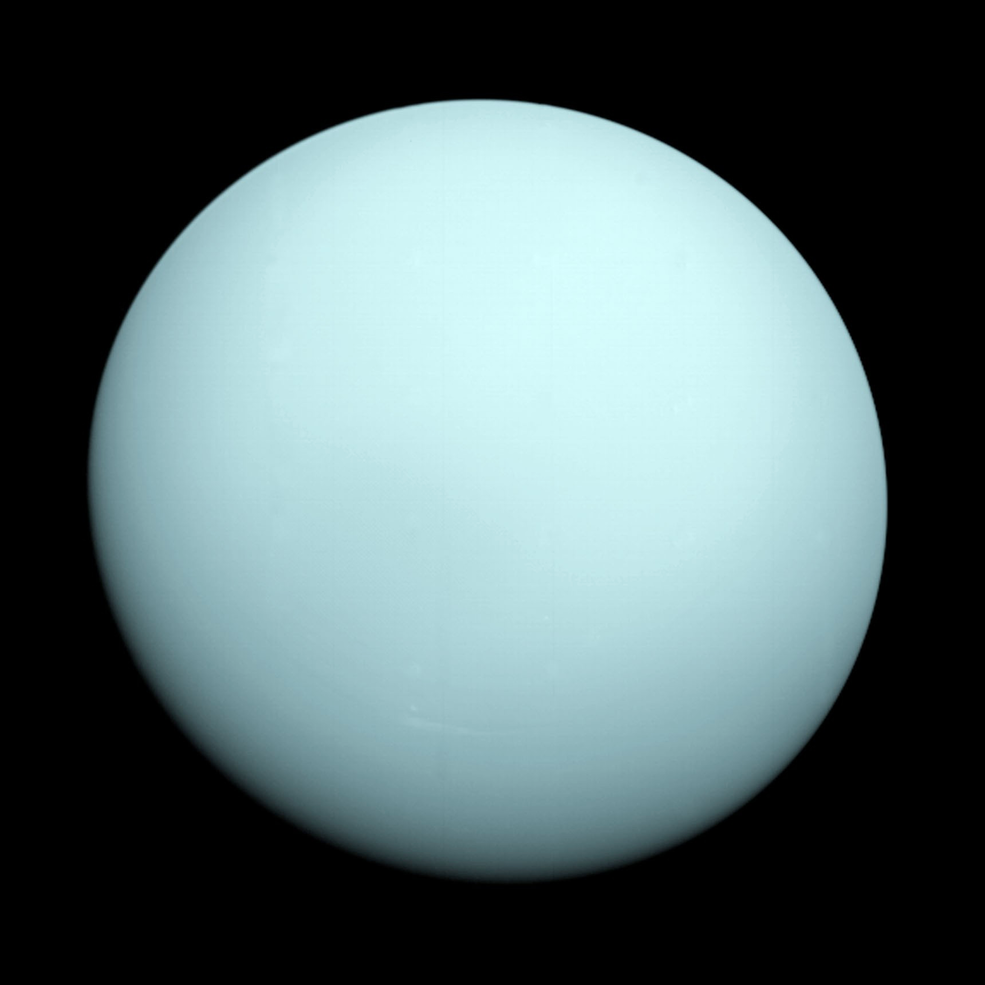
- Uranus always appeared as a uniform, turquoise colored disk through our telescopes, and when Voyager 2 finally visited it in 1986, it was the only “featureless” planet, even up-close.
- However, unlike all the other planets, Uranus rotates about a horizontal axis rather than a vertical one, making its differences between solstice and equinox the most severe of any planetary body.
- We didn’t have the tools to visit it in 2007, but telescopes gave a very different view from Voyager 2. We have another chance coming up in 2034. Let’s make it happen!
Whether we look at them from afar or up close, the eight major planets of the Solar System are all seen to possess their own unique features. The rocky planets have craters, ridges, mountains and more: evidence of a violent past and interior activity. All the planets except Mercury have atmospheres, where volatile materials form clouds and hazes. On the gas giant worlds, banded structures, storms, and turbulent streams are commonly seen. Jupiter, Saturn, and Neptune all display spectacular changes over time whenever we’ve examined their atmospheres in detail.
But not Uranus. Alone among all the planets in the Solar System, Uranus always appeared as a light, blue-colored, otherwise featureless world. Even when it was visited up close by the Voyager 2 spacecraft in 1986, the most remarkable part of the story was how unremarkable Uranus itself appeared. To the human eye, Uranus appeared as the only planet without interesting features on it.
But as time went on and our telescope technology improved dramatically, we discovered that Uranus doesn’t always appear so bland and featureless. Depending on when we look, its appearance changes dramatically. The next time it looks different from the featureless world we saw in 1986, we’ll have a chance to go. Here’s the story of why and how Uranus needs, and deserves, another up-close look.
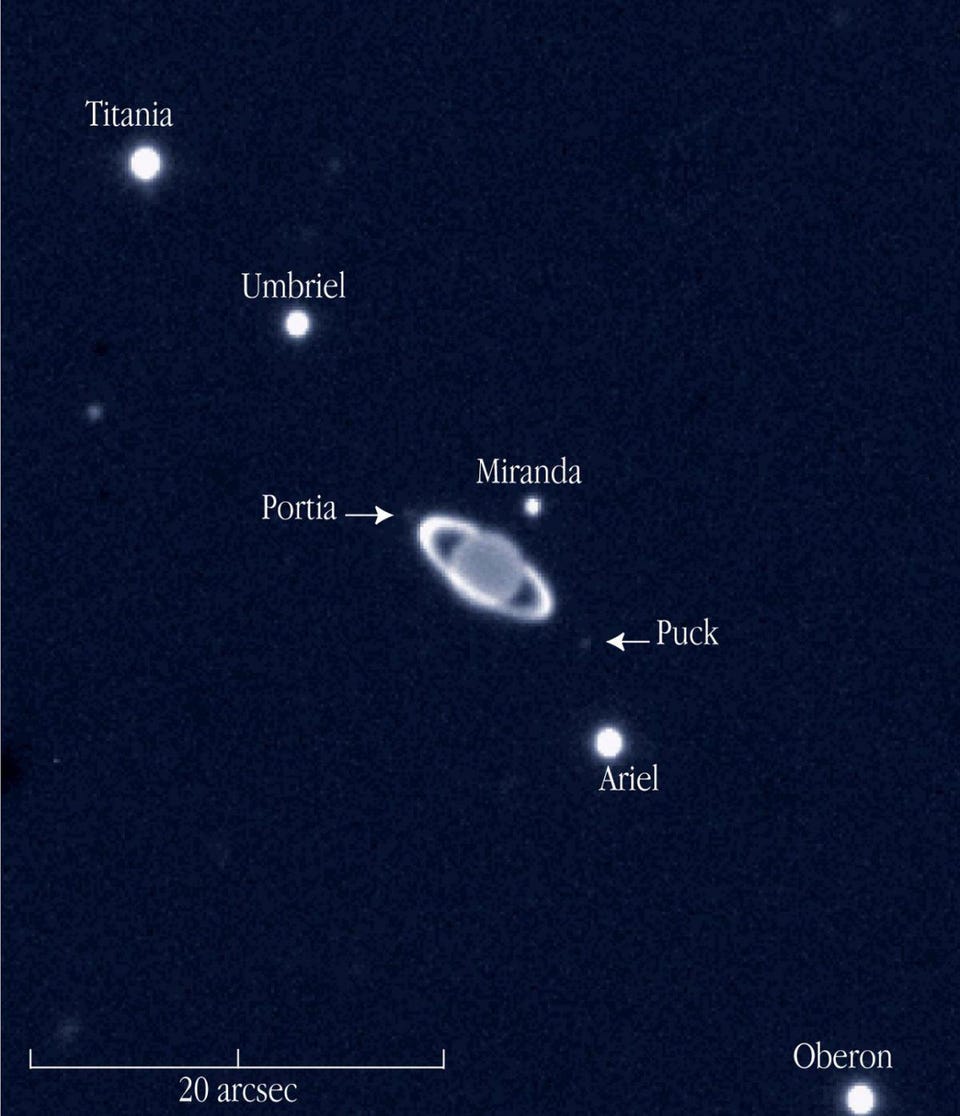
Uranus, as seen from Earth, is just a tiny turquoise disc. Voyager 2, which had previously revealed unprecedented details of storms and bands on Jupiter and Saturn, saw a large, featureless, turquoise globe when it came to Uranus. Even by turning up the image contrast as high as possible, there was practically nothing to see. Uranus appeared to be, quite disappointingly, the most boring planet we could have imagined.
Initially, we thought we understood why it was such a featureless world. With such a small size relative to Saturn or Jupiter, it was conjectured that Uranus wasn’t able to generate any of its own internal heat, and was therefore only at the temperature you’d expect if it were heated by the Sun. It was blue and featureless because it was cold, distant, and didn’t produce its own heat. Its upper atmosphere was a constant 58 K. And that seemed to be the entire story.
But then, three years after it flew by Uranus, Voyager 2 visited Neptune as well: of a similar size and mass to Uranus but even colder. And, as it turned out, Neptune was much more like Saturn and Jupiter than it was like Uranus, invalidating the explanation that had held sway up until that point.

Sure, Uranus really is cold and distant, and doesn’t generate very much internal heat; that part is true. But Uranus is unique among all the worlds in the Solar System for a special property it possesses: its rotation. Unlike all the other worlds, which rotate at some relatively small (less than 30°) tilt relative to the plane of the Sun’s rotation, Uranus is practically on its side, with a rotational inclination of 97.8°. It’s the only planet that, instead of spinning like a top, it’s rolling like a barrel in its orbit around the Sun.
When the Voyager 2 spacecraft flew past Uranus in 1986, it corresponded to Uranian solstice: the side illuminated by the Sun was one of Uranus’ polar regions.
But as the years and decades ticked by, Uranus moved from solstice towards equinox, when its equatorial region would be illuminated by the Sun instead. Instead of a constant influx of sunlight on one hemisphere, lasting years, there was a rapid day/night shift, coincident with Uranus’ rotational period of about 17 hours. This would set the stage for a remarkable transformation to come in the years ahead.
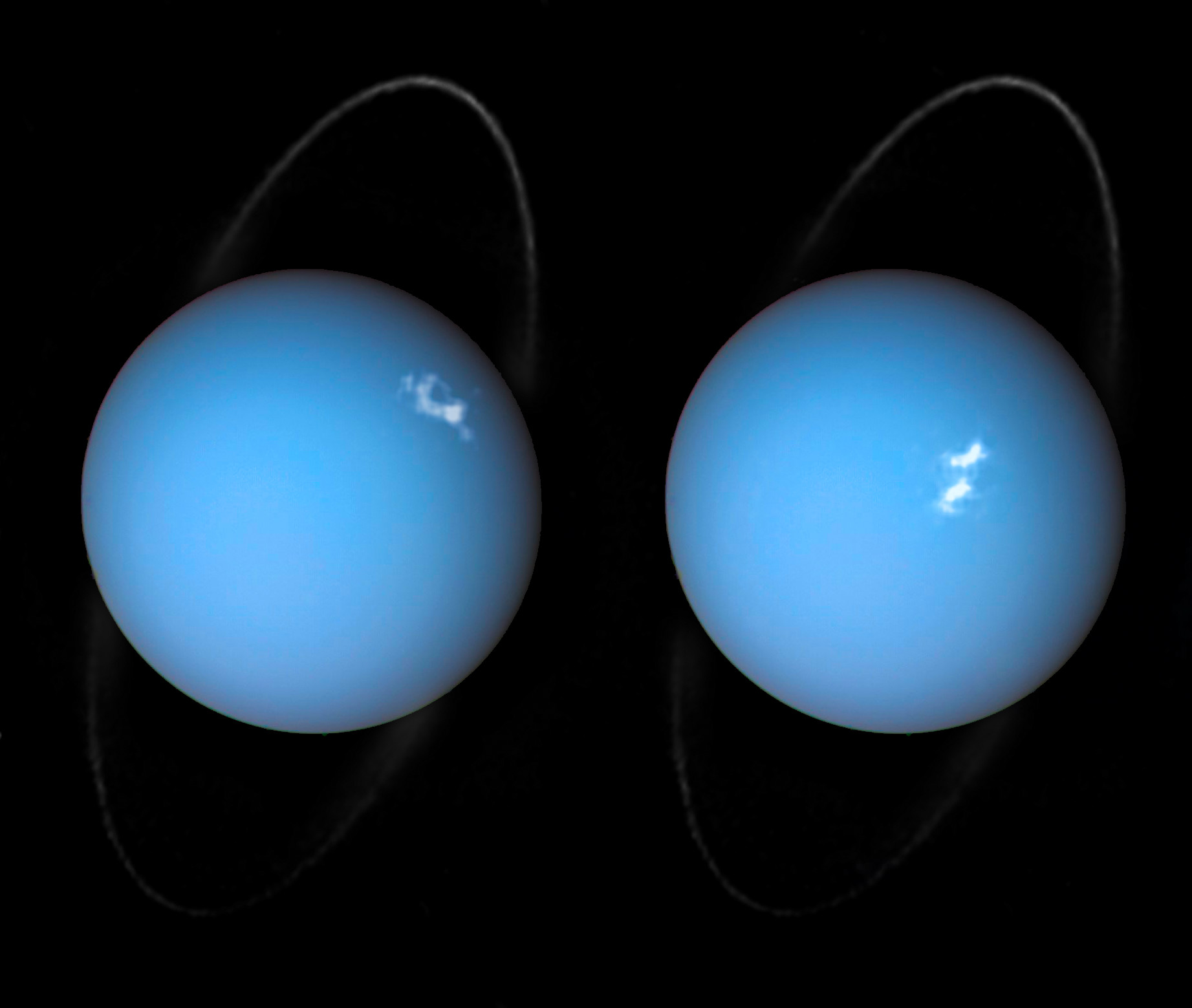
Uranus takes 84 Earth-years to complete a revolution around the Sun, which means it takes 21 Earth-years to go from solstice to equinox. With Voyager 2 flying by it at solstice in 1986, that implied the best time to view it next would be in 2007, when it was at equinox. We didn’t have another mission ready to go at that time, but we did have the Hubble Space Telescope.
As you can see, above, there are all the features you would have hoped for the first time. There are swirling clouds, storms, and even characteristic atmospheric bands. There are dark spots and light spots, hazes and clear regions, with differential colors at different Uranian latitudes. Instead of a monochrome, featureless world, we at last found the active atmosphere we had expected all along.
The reason for Uranus’ uniform color during the solstice is due to a haze of methane that’s produced when the planet is in continuous daylight. Methane, in this state of matter, absorbs red light, which is why the reflected sunlight takes on that turquoise hue. Simultaneously, the methane haze masks the clouds below it, which is what causes Uranus to have the featureless appearance we came to know ubiquitously after the Voyager 2 visit.
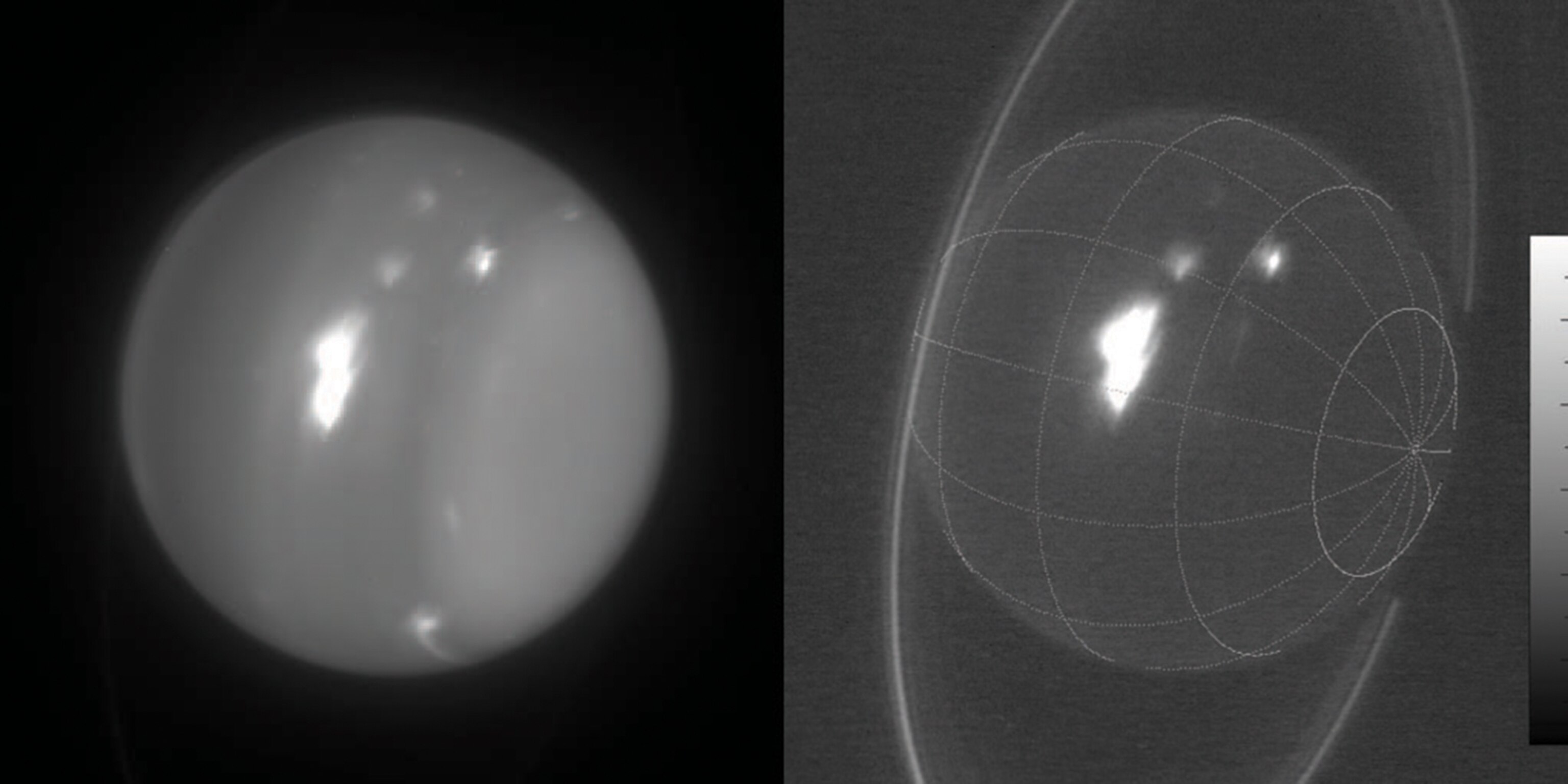
Because of its rotational inclination, a solstice Uranus will appear to be a boring Uranus. But that methane haze, so prevalent in the upper atmosphere of Uranus, only represents the top 1% of the atmosphere. Observing in bands other than visible light can reveal even more of its non-uniform properties, but that non-uniformity is highest when it’s closer to equinox than to solstice.
Because an equinox-like Uranus will cool off during the night, the methane haze goes from being a top-layer aerosol — which is a solid or liquid particle suspended in a gas — to particles that mix with the lower atmospheric layers. Thus, when day emerges again, the uppermost layer is partially transparent.
And what we’ve found, when that occurs, is that there are observable changes in the upper atmosphere, which holds clues to the 99% of the unseen atmosphere beneath it. There are storms that are present even in the old Voyager 2 information, visible only by stacking over 1,000 images together and looking for variations between frames.
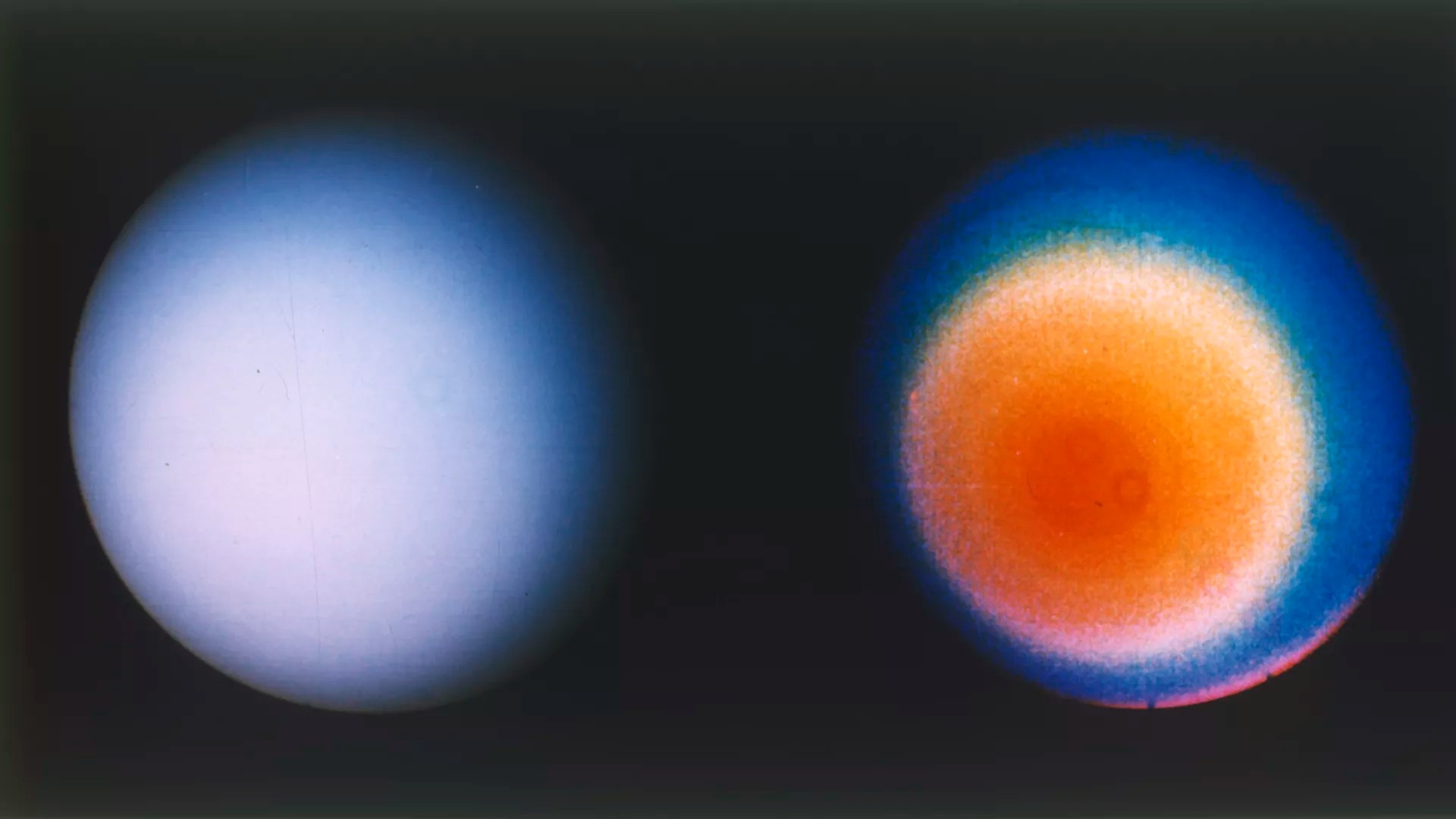
According to astronomer Erich Karkoschka, who did this frame-stacking work back in 2014:
“Some of these features probably are convective clouds caused by updraft and condensation. Some of the brighter features look like clouds that extend over hundreds of kilometers. […] The unusual rotation of high southern latitudes of Uranus is probably due to an unusual feature in the interior of Uranus. While the nature of the feature and its interaction with the atmosphere are not yet known, the fact that I found this unusual rotation offers new possibilities to learn about the interior of a giant planet.”
By looking in wavelengths of light beyond what the human eye can see, such as the infrared, we can construct enhanced-color images. As you’d expect, when Uranus is near equinox, these reveal a slew of features that are invisible to the human eye, including:
- bands of atmospheric structure,
- hemispheric differences between the sun-facing and space-facing poles,
- storms and clouds present in the upper atmosphere,
- and even a faint ring system that likely results from shattered or tidally-disrupted moons.
There are also storms that are visible only in the infrared that intensify and subside. Contrary to our initial observations, Uranus is a feature-rich world, but only if you look at it in the right ways.
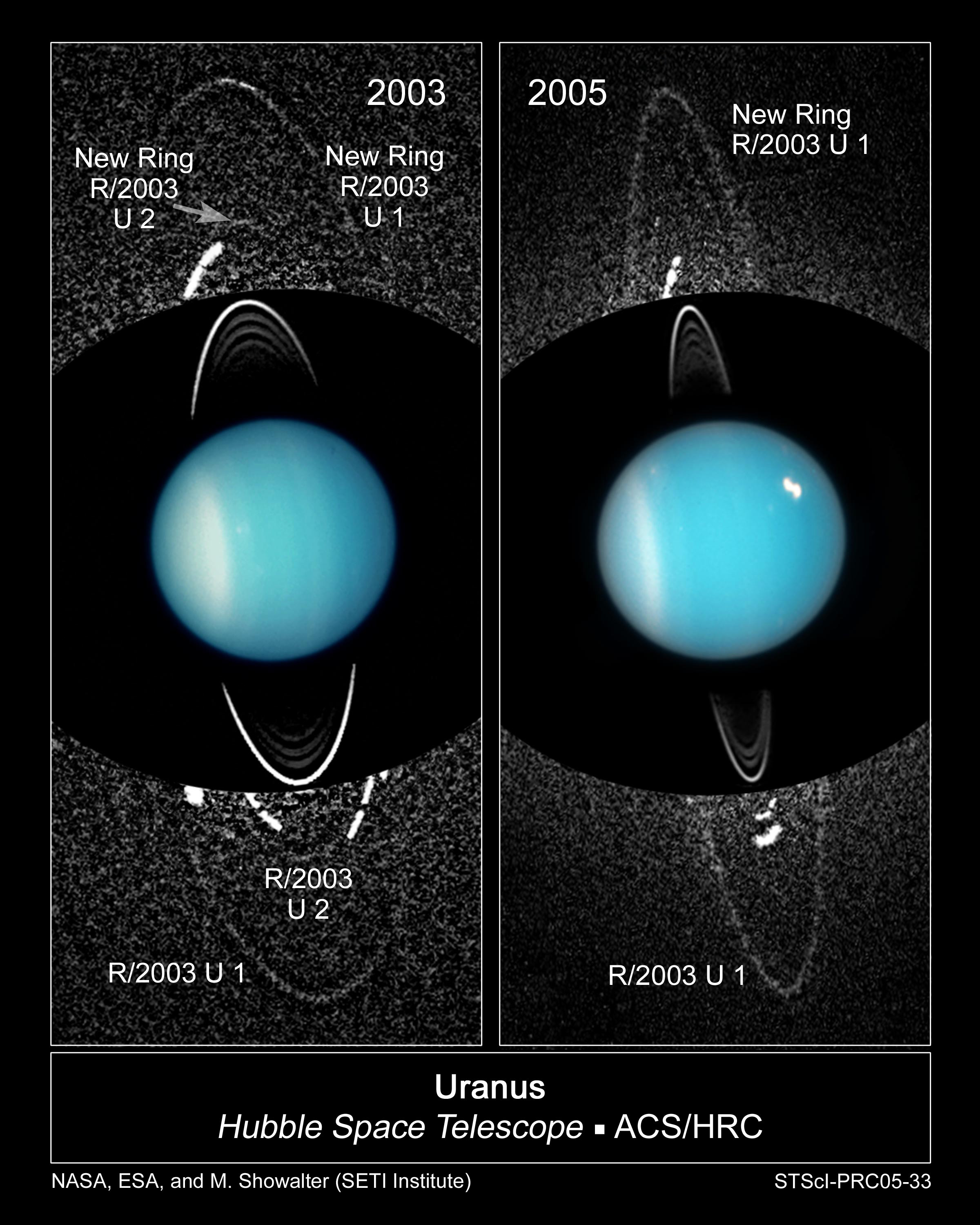
Of course, if we really wanted to look at Uranus in the right ways to reveal its features, we would send an orbiting mission that could observe this outer planet over long periods of time, over its entire surface, and when it was close to equinox rather than right at solstice. To make that happen, however, you have to launch at the right time: where the planets that you’ll need for the right series of gravity assists can get you to your destination with a reasonable velocity and orientation so that you can enter a stable orbit with minimal fuel expenditure around your outer planet.
Instead of a single pass, an orbiter can get you whole-world coverage, multiple times, over long periods of time. You can see changes in the atmosphere of a world, and examine it continuously in a wide variety of wavelengths invisible to the human eye. You can find new moons, new rings, and new phenomena that you never expected. You can even send down a lander or probe to the planet or one of its moons.
All of that and more already happened around Saturn with the recently-completed Cassini mission.
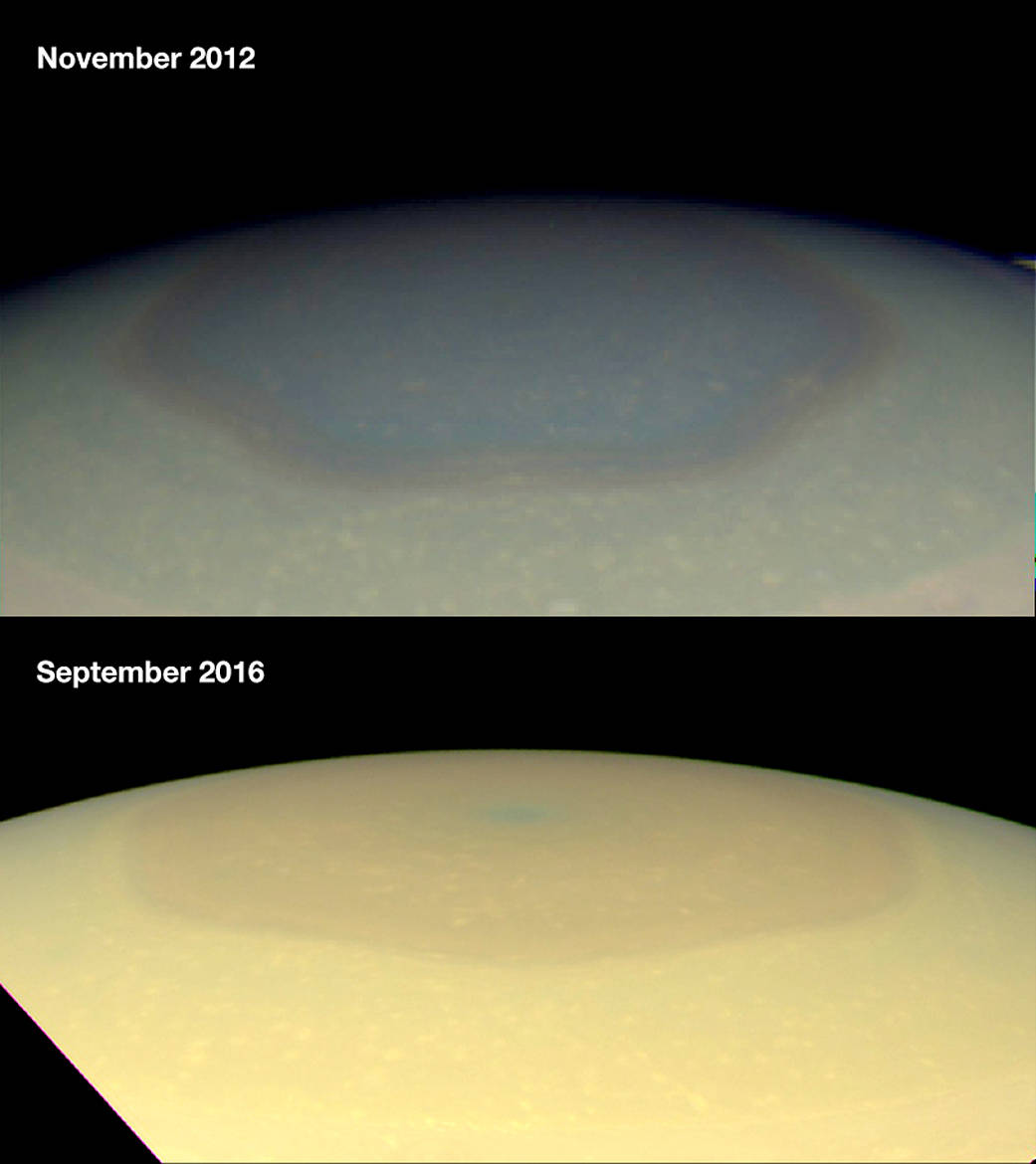
Cassini didn’t just learn about the physical and atmospheric properties of Saturn, although it did that spectacularly. It didn’t just image and learn about the rings, although it did that too. What’s most incredible is that we observed changes and transient events that we never would have predicted.
- Saturn exhibited seasonal changes, which corresponded to chemical and color changes around its poles.
- A colossal storm developed on Saturn, encircling the planet and lasting for many months.
- Saturn’s rings were found to have intense vertical structures and to change over time; they’re dynamic and not static, and they’re even in the process of rapidly evaporating.
All of this provided a laboratory to teach us about planet-and-moon formation, and the evolution and composition of the Saturnian atmosphere. And, with Cassini data, we solved old problems and discovered new mysteries about a wide variety of its moons, including the spectacular Iapetus, Titan, and Enceladus, among others.
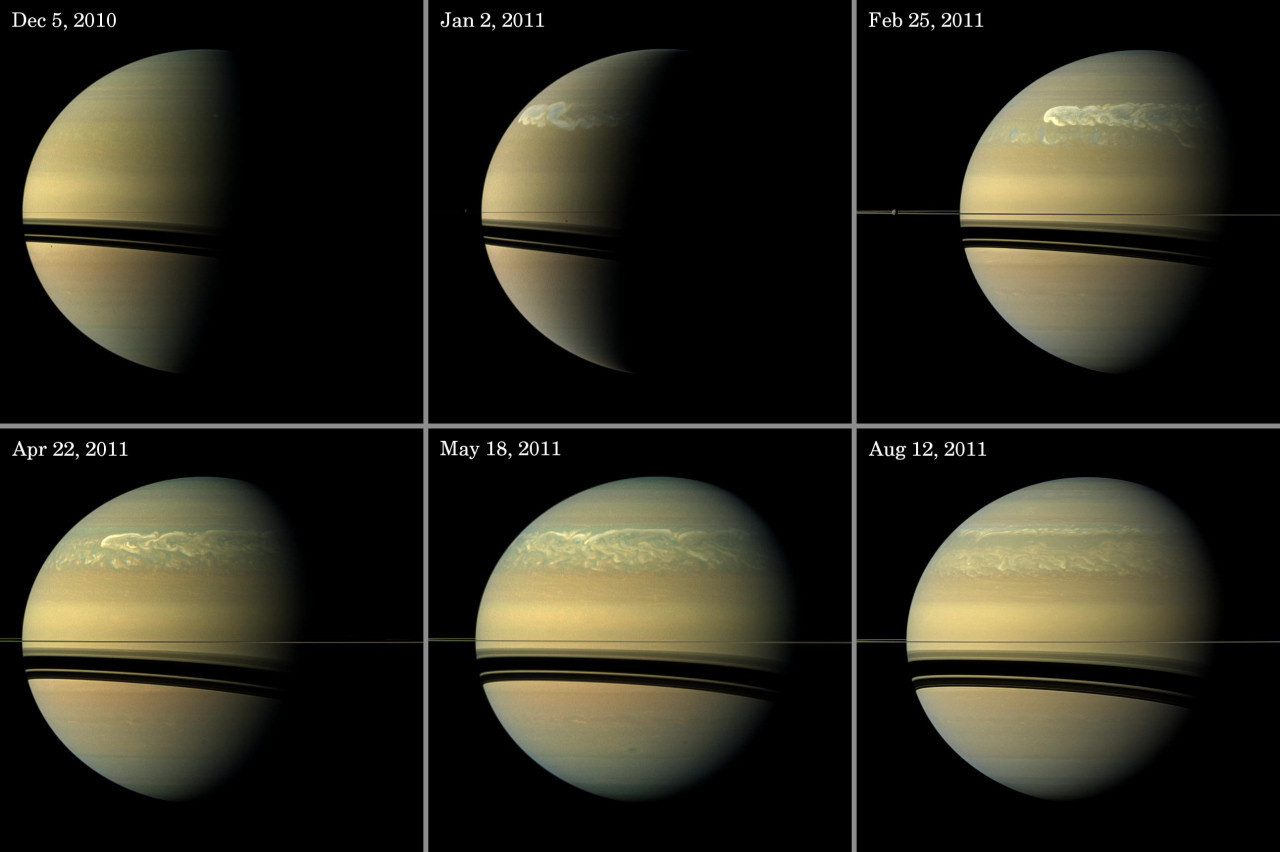
There’s little doubt we’d want to do the same for Uranus and Neptune. So far, with the exception of the Voyager 2 flyby back in the 1980s — a flyby conducted with 1970s-era technology on board — we’ve only studied these worlds from afar. But there is a tremendous hope for a future mission only a few years from now, as launch windows for missions to Uranus open up.
One of the major, flagship-class missions proposed to NASA’s planetary science decadal survey in 2011 was a Uranus probe and orbiter; it was ranked #3, but in the most recent planetary science decadal, it was ranked as the highest-priority planetary flagship mission. Right now, the target is to launch the mission in 2031, where a Jupiter gravity assist would enable arrival at Uranus in 2044. The science phase, at that point, would last for between 4-and-5 years and would include multiple close flybys of each of Uranus’s 5 major moons, and would study Uranus’s rings and atmosphere as well.
Uranus, as well as its outer neighbor, Neptune, should both have enormous liquid oceans beneath their atmospheres, which an orbiter should be able to discover for certain. The mission could also include an atmospheric probe, with the potential to measure cloud-forming molecules, heat distribution, and how wind speed changes with depth.
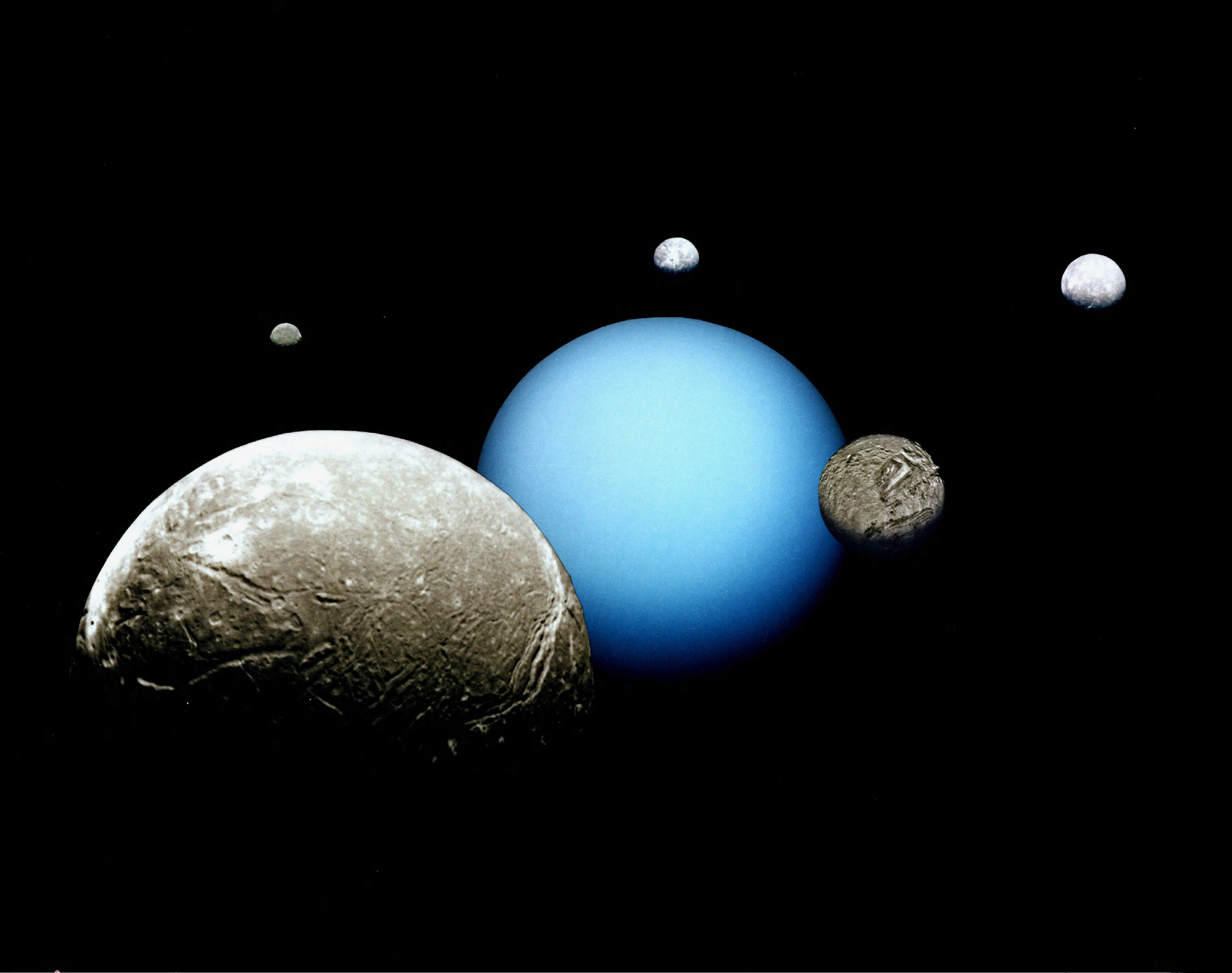
Just a little bit of simple math shows us why we’re headed to explore Uranus at just the right time.
- In 1986, Uranus was at solstice, appearing bland and featureless due to the Sun heating one of its poles, not the entire, rapidly rotating planet.
- In 2007, Uranus was at equinox, displaying rapidly evolving atmospheric features and auroral activity.
- In 2028, Uranus will be at solstice once again, where the opposite pole from 1986 faces the Sun, and where it will again become largely featureless in appearance.
- And by the time that this new mission arrives at Uranus, in 2044, it will be close to equinox once again. If the mission survives into its fifth year, in 2049, it will be in great position to monitor the planet’s changes as it reaches equinox: exactly the conditions we’d ideally want to observe.
Neptune and Uranus may look similar to us in terms of mass, temperature, and distance, but they may truly be as different, from one another and also from the other gas giant planets, as Earth is from Venus. There’s only so much we can do with telescopes from afar; to take the next step in understanding the objects in our Solar System, there’s no substitute for a thorough, up-close examination.
